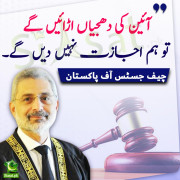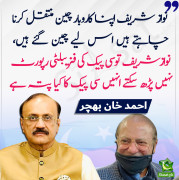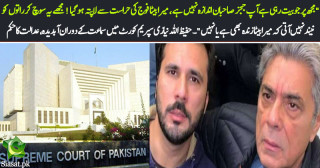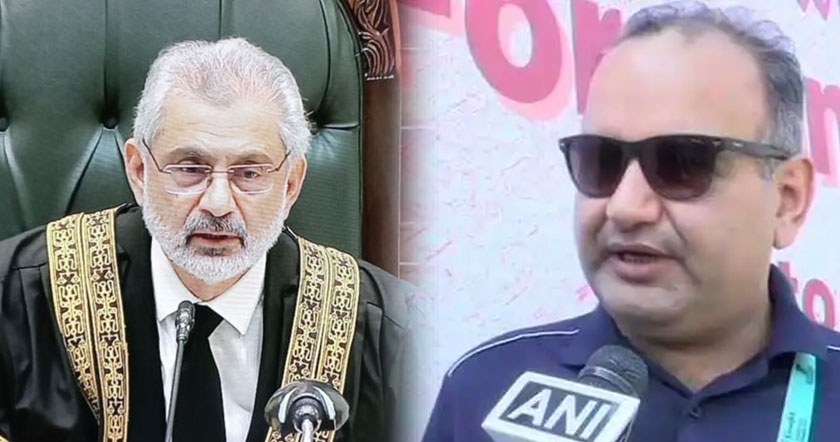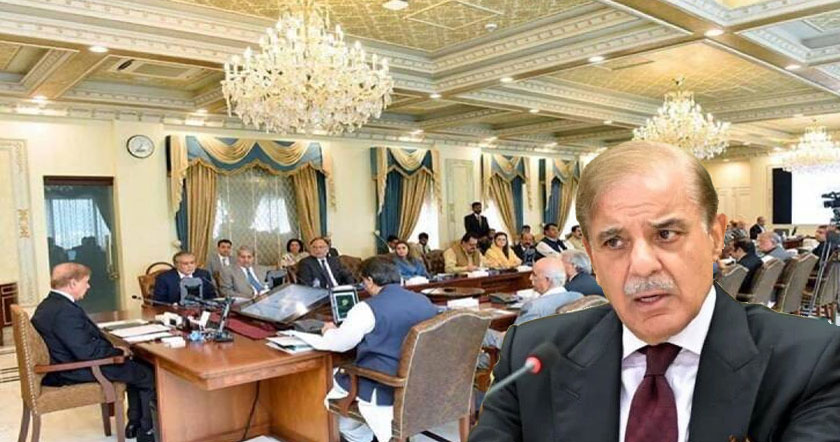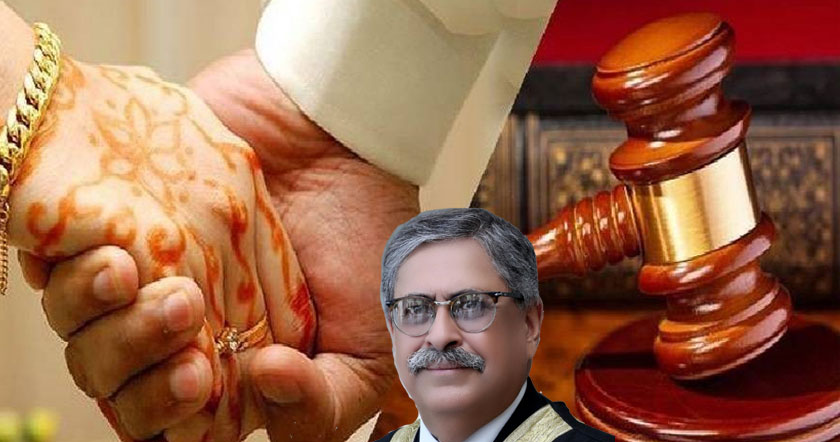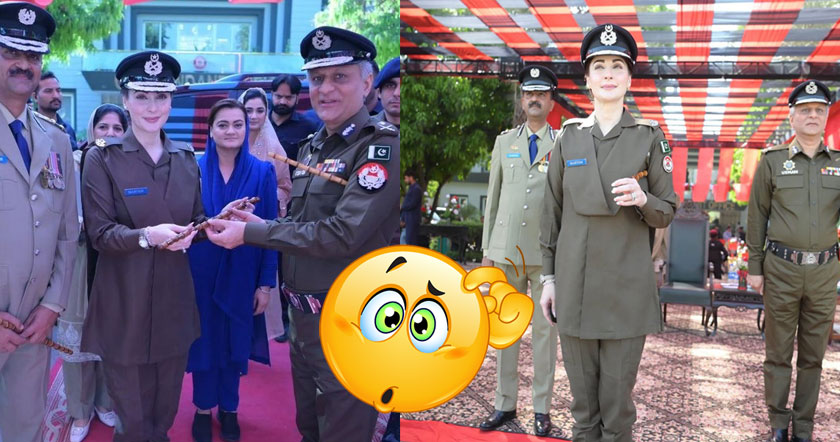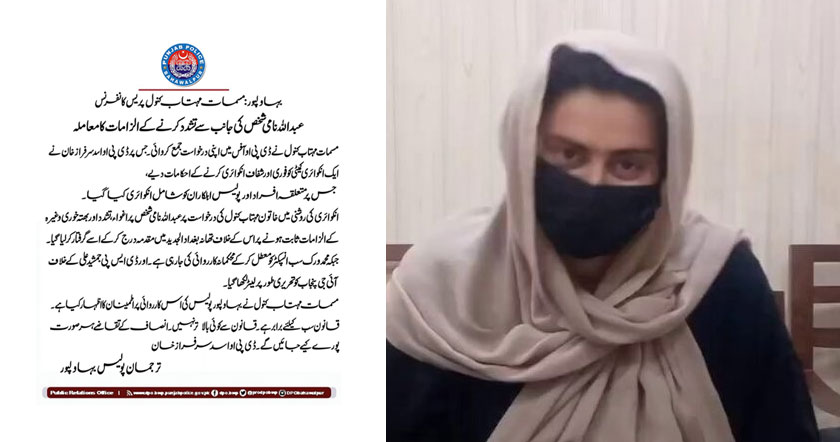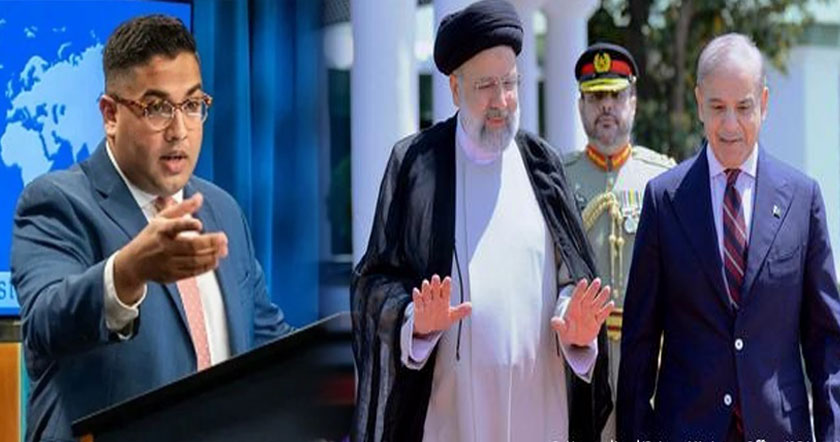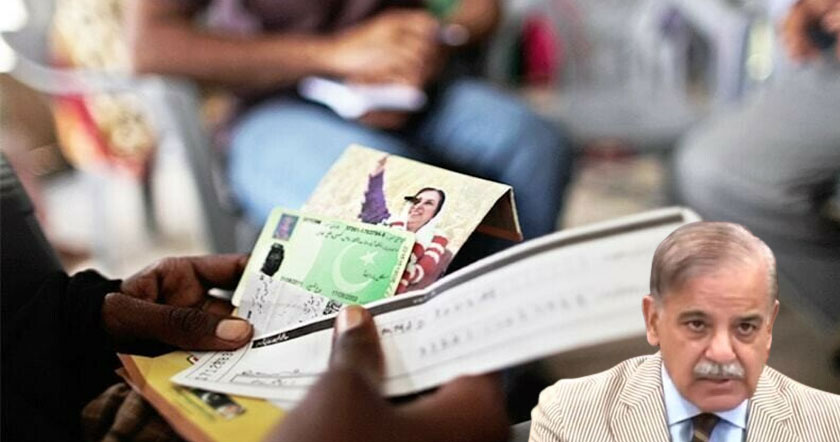By Shahidur Rashid Talukdar,
The condition of Muslims in India is pitiable. As it has been documented by the Sachar Committee Report (SCR), Muslims are virtually lagging behind all other communities and a trend of relative deterioration is observed in almost all spheres of day-to-day life. Especially in the field of education, the situation is of grave concern.
Muslims literacy
While the overall literacy rate in India is above 65%, the literacy rate of Muslims is around 59%. However, on extending the consideration beyond mere literacy rate, Muslims fall far behind others. Where, in general, 26% of those aged 17 years and above have completed matriculation, this percentage is only 17% amongst Muslims. The Mean Years of Schooling among children of age group of 7- 16 years is lowest among Muslims at around 3.4 years whereas for others it is above 5 years. According to the 2001 Census data, while only about 7 per cent of the overall population aged 20 years and above are graduates or hold diplomas, this proportion is less than 4 per cent amongst Muslims. Besides, those having technical education at the appropriate ages (18 years and above) are as low as one per cent and amongst Muslims, that is almost non-existent.
NSSO survey confirms Sachar
It was hoped that the scenario might change with time but unfortunately, the trend does not look very optimistic. What Sachar Committee Report (SCR) had found out has recently been reconfirmed by the NSSO survey report titled Education in India (2007-08): Participation and Expenditure. One of the findings of the report is that Muslims still are the most backward section in terms of education. Percentage distribution of persons of age 5-29 years by current enrollment and attendance status in educational institutions for each religion shows that the Muslim community with an enrollment of 46.2% lags behind all other communities while Christians lead the trend with an enrollment of 58.3%. This might not give the actual state of affairs since it pertains to only the sample surveyed but it indeed shows the trend.
Another such distribution shows that at the primary level Muslims start with an above average enrollment but the rate falls quickly below average at the upper primary level and the trend continues up to the post higher secondary level. Although every community experiences a decline in the enrollment ratio as one goes up to the higher classes but the decline is the steepest in case of Muslims. This means, the community loses its grip right at the primary level. The highest drop-out rate accounts for the steepest fall in enrollment at the next level i.e. the Upper Primary level and hence in the secondary and all subsequent levels.
Muslims in school education
The SCR explicitly recognizes that attainment of Muslims in school education is lower than average and the gap between Muslims and other communities increases as the level of education increases. Further, a comparison of the probability estimates for completion of higher secondary and graduation suggests that Muslims are at a much larger disadvantage at the higher secondary level. This presumably results in a much lower size of Muslim population eligible for higher education. These findings not only establish that there is little empowerment of Muslims but also discards even the misconception regarding minority appeasement.
The reasons for this alarming situation of the Muslim communitys educational progress has been enumerated by the SCR as Poverty considered as the Main Cause of Low levels of Education, Poor Access to Schools, Low Perceived Returns from Education, and other School-based Factors. While poverty among Muslims is explicit, the other factors deserve further elaboration. A mere physical existence of a school in the vicinity does not ensure access to quality education. As the report admits, Government schools that do exist in Muslim neighborhoods are merely centers of low quality education for the poor and marginalized. The poor quality of teaching, learning, absentee teachers, in turn, necessitate high cost inputs like private tuition, particularly in the case of first generation learners from the Muslim community. This has a negative impact on retention and school completion. Thus, poverty again has a causal link with access to education among Muslims.
Low expectation of return from attending schools is another factor for lack of motivation towards education. Since the community does not see a lot of Muslims youths becoming successful by virtue of going to school, it apparently does not promise much of immediate return to people who rather pay attention to vocations that pay an earlier return. This happens due to abysmally low representation of Muslims in public and private sector jobs.
Another very important reason is the content of the school books which usually escapes the attention. The SCR points out that the communal content of school textbooks, as well as, the school ethos has been a major cause for concern for Muslims in some states. This is disconcerting for the school going Muslim child who finds a complete absence of any representation of her Community in the school text ultimately developing a sense of unbelongingness to the system.
Discrimination against Muslims at schools
One more, very crucial and most unfortunate, problem is that many schools are culturally hostile and Muslim students experience an atmosphere of marginalization and discrimination. A growing communal mindset among large number of school teachers adds to the hostile school atmosphere. Furthermore, the report argues that, contrary to popular perception that religious conservatism among Muslims somehow militates against educating girls, current research indicates that poverty and financial constraints are the major causes that prevent Muslim girls from accessing modern/'secular education.
The report reiterates that Muslim women often face overt discrimination from school authorities while trying to get admission or in availing of scholarships for their children. Perceptions of public security partly associated with increasing incidents of communal violence prevent parents from sending daughters to schools located at a distance where they would have to use public transport. This is particularly the case when they reach upper primary and middle school and leads to high drop out rates among Muslim girls in this age group. How unfortunate is that for a democracy like India? Is not it barbaric that someone grows in the society with anxiety and fear of communal violence? How can one expect such a generation to be good citizens with equal respect for all? Such developments, deliberate or inadvertent, not only question India's credentials as a secular democracy but also cast doubt over the future prospect of becoming one.
The report also points out that there are systematic discriminatory policies against Urdu as a language. Since Urdu is no longer taught in most state schools some parents prefer not to send their daughters to schools in stead they send them to Madarsas.
Low presence at Jawahar Navoday Vidyalayas
A special case of the Jawahar Navoday Vidyalayas (JNVs) is another eye opener. If poverty alone were responsible for low participation and attainment, the share of Muslims students in Navoday Vidayalayas should have been high but for some reasons this too, is extremely low at just about 3 to 4 %. The schools which were set up with the objective of excellence, coupled with equity and social justice also failed to draw participation of the largest religious minority. But why? Is it a failure of the Institutions to reach the community and address its needs and aspirations or is it a failure of the community to make use of the provision? What are the reasons for this failure?
One reason could be the lack of awareness and hence low level of interest. From a general understanding, the aforesaid factors like abject state of poverty which restricts children to meet the eligibility requirement of the JNVs, low expectation from education, fear of being discriminated, poorly designed course content could provide some of the reasons. Further, is there any myth/misconception surrounding the schools about any religious or cultural affiliation that the community feels uncomfortable about just like the Tamils could not welcome the idea of JNVs because of compulsory Hindi? In order to have a better and a deeper understanding of the dynamics, there needs to be a detailed study.
Suggestions to reduce educational deprivation of Muslims
An impartial analysis of the ground realities depicts that the poor performance of Muslims in education emanates from a host of factors starting from abject poverty and communal/cultural discrimination to poorly designed course contents. So in order make the Indian education system more inclusive, the issues need to be addressed explicitly. A general attempt of setting up schools in the Muslim majority areas or providing scholarships to some students may not promise a substantial amelioration of the situation.
As the problem is complicated, so will be the solution. The mainstreaming and improving the plight of minorities stands as a challenge to Muslims as a community and the Government (s) as the state. Muslims as a community, will have to bear their share of the burden by actively engaging themselves to the discussion as to what are the reasons behind their poor participation and performance, what could be solutions, how they could be implemented. Muslim leadership and Civil societies must become pro-active rather than maintaining a reactive stance.
The government must provide a platform for equitable participation and inclusive growth. First of all, creating sufficient awareness about various existing facilities, schemes and programs is very important. Affirmative actions to address the serious issue need to be undertaken. Considering the gravity of the situation, a constitutional amendment may become necessary to provide justice to the religious minorities who are suffering because of the constitutional discrimination against Muslims. Muslims being as backward as SCs/STs, are not getting the benefits of reservations simply because their religious identity. So, this issue needs to be given due consideration so that reservation can be extended to Muslims like any other community.
Seeing the under-participation of the community, it becomes imperative to provide reservations at all levels of education just as SC/STs are given. It becomes even more important at the primary, secondary, higher secondary levels since these form the foundation for higher education. Thus, the government should allocate at least 10% of the seats in existing Navoday Vidyalayas, the 3500 Model Schools to be set up under the directives of the Cabinet Committee on Economic Affairs (CCEA) declared in April 2010, and any other similar public institutions.
The logic in favor of such reservation is that these schools operate pretty much from entry levels. The intervention point being a very early one, students are less like to have developed a mediocrity which becomes a problem at a higher level when reservation is given at universities, IITs, IIMs etc. So if a student is given admission, then the subsequent progress will be determined by the average standard of the schools. In general, any student, irrespective of her religious identity, should have a similar level of performance in such schools where the students have minimal stakes with the ills of society like poverty, discrimination, alienation, etc.
To develop interest and affiliation to the schools in the community, the nomenclature might carry some significance. Just like Aligarh Muslim University, Jamia Millia Islamia, Jamia Hamdard, Maulana Azad National Urdu University, etc., a Muslim sounding name of the school may invoke a higher degree of interest from the community. Out of 3500 Model Schools, if some of the schools that would be located in predominantly Muslim areas, 350 schools for instance, are named after any Muslim leader or Freedom Fighter, then this is likely to draw the attention of the Muslims and boost their participation, at least to some extent.
Another integrative measure will be to recruit Muslim teachers in the schools. In the absence of Muslim teachers, the students from Muslim community may feel alienated in the school, as it has been pointed out in the SCR. Induction of 10 to 15% Muslim teachers and a good proportion of female teachers will not only encourage Muslims students, especially Muslim Girls, to attend and continue schooling but will also promote equity and justice in employment and hence will address the economic and gender disparity.
Besides introducing Urdu as a language option, the general content of the language courses may be modified to accommodate writing of prominent Muslim authors. Inclusion of topics or chapters appreciating the Muslim/Islamic values will enhance level of interest among Muslim students and at the same time will enable the non-Muslim students to develop a better understanding and hence a more respectable view of the community. Inclusion of a chapter on Al-Khwarizmi, Ibn-Khaldun, etc. will highlight the contribution of Muslim scholars which is hardly to be found otherwise. A story about CV Raman may be complemented by another story about Abdus Salam.
Literature apart, in a mathematics and science text books short paragraphs about where a topic or a chapter came from like the definition of zero from Indians, and the number system from Arabs, and similar description or discussion about topics highlighting the contributions of Hindu, Muslim or other scholars will enhance the level of interest of all the children from all communities. An unbiased body of scholars from the NCERT can be entrusted to carry out the necessary research and then such modifications can be incorporated which will create a balance between contributions from various communities. Of course, in such an endeavor it will be highly required that the scholars themselves are not biased towards any particular religion or community. Otherwise, the situation will become worse as it was the case a few years ago, when the NCERT history books were deliberately saffronized.
The condition of Muslims in India is pitiable. As it has been documented by the Sachar Committee Report (SCR), Muslims are virtually lagging behind all other communities and a trend of relative deterioration is observed in almost all spheres of day-to-day life. Especially in the field of education, the situation is of grave concern.
Muslims literacy
While the overall literacy rate in India is above 65%, the literacy rate of Muslims is around 59%. However, on extending the consideration beyond mere literacy rate, Muslims fall far behind others. Where, in general, 26% of those aged 17 years and above have completed matriculation, this percentage is only 17% amongst Muslims. The Mean Years of Schooling among children of age group of 7- 16 years is lowest among Muslims at around 3.4 years whereas for others it is above 5 years. According to the 2001 Census data, while only about 7 per cent of the overall population aged 20 years and above are graduates or hold diplomas, this proportion is less than 4 per cent amongst Muslims. Besides, those having technical education at the appropriate ages (18 years and above) are as low as one per cent and amongst Muslims, that is almost non-existent.
NSSO survey confirms Sachar
It was hoped that the scenario might change with time but unfortunately, the trend does not look very optimistic. What Sachar Committee Report (SCR) had found out has recently been reconfirmed by the NSSO survey report titled Education in India (2007-08): Participation and Expenditure. One of the findings of the report is that Muslims still are the most backward section in terms of education. Percentage distribution of persons of age 5-29 years by current enrollment and attendance status in educational institutions for each religion shows that the Muslim community with an enrollment of 46.2% lags behind all other communities while Christians lead the trend with an enrollment of 58.3%. This might not give the actual state of affairs since it pertains to only the sample surveyed but it indeed shows the trend.
Another such distribution shows that at the primary level Muslims start with an above average enrollment but the rate falls quickly below average at the upper primary level and the trend continues up to the post higher secondary level. Although every community experiences a decline in the enrollment ratio as one goes up to the higher classes but the decline is the steepest in case of Muslims. This means, the community loses its grip right at the primary level. The highest drop-out rate accounts for the steepest fall in enrollment at the next level i.e. the Upper Primary level and hence in the secondary and all subsequent levels.
Muslims in school education
The SCR explicitly recognizes that attainment of Muslims in school education is lower than average and the gap between Muslims and other communities increases as the level of education increases. Further, a comparison of the probability estimates for completion of higher secondary and graduation suggests that Muslims are at a much larger disadvantage at the higher secondary level. This presumably results in a much lower size of Muslim population eligible for higher education. These findings not only establish that there is little empowerment of Muslims but also discards even the misconception regarding minority appeasement.
The reasons for this alarming situation of the Muslim communitys educational progress has been enumerated by the SCR as Poverty considered as the Main Cause of Low levels of Education, Poor Access to Schools, Low Perceived Returns from Education, and other School-based Factors. While poverty among Muslims is explicit, the other factors deserve further elaboration. A mere physical existence of a school in the vicinity does not ensure access to quality education. As the report admits, Government schools that do exist in Muslim neighborhoods are merely centers of low quality education for the poor and marginalized. The poor quality of teaching, learning, absentee teachers, in turn, necessitate high cost inputs like private tuition, particularly in the case of first generation learners from the Muslim community. This has a negative impact on retention and school completion. Thus, poverty again has a causal link with access to education among Muslims.
Low expectation of return from attending schools is another factor for lack of motivation towards education. Since the community does not see a lot of Muslims youths becoming successful by virtue of going to school, it apparently does not promise much of immediate return to people who rather pay attention to vocations that pay an earlier return. This happens due to abysmally low representation of Muslims in public and private sector jobs.
Another very important reason is the content of the school books which usually escapes the attention. The SCR points out that the communal content of school textbooks, as well as, the school ethos has been a major cause for concern for Muslims in some states. This is disconcerting for the school going Muslim child who finds a complete absence of any representation of her Community in the school text ultimately developing a sense of unbelongingness to the system.
Discrimination against Muslims at schools
One more, very crucial and most unfortunate, problem is that many schools are culturally hostile and Muslim students experience an atmosphere of marginalization and discrimination. A growing communal mindset among large number of school teachers adds to the hostile school atmosphere. Furthermore, the report argues that, contrary to popular perception that religious conservatism among Muslims somehow militates against educating girls, current research indicates that poverty and financial constraints are the major causes that prevent Muslim girls from accessing modern/'secular education.
The report reiterates that Muslim women often face overt discrimination from school authorities while trying to get admission or in availing of scholarships for their children. Perceptions of public security partly associated with increasing incidents of communal violence prevent parents from sending daughters to schools located at a distance where they would have to use public transport. This is particularly the case when they reach upper primary and middle school and leads to high drop out rates among Muslim girls in this age group. How unfortunate is that for a democracy like India? Is not it barbaric that someone grows in the society with anxiety and fear of communal violence? How can one expect such a generation to be good citizens with equal respect for all? Such developments, deliberate or inadvertent, not only question India's credentials as a secular democracy but also cast doubt over the future prospect of becoming one.
The report also points out that there are systematic discriminatory policies against Urdu as a language. Since Urdu is no longer taught in most state schools some parents prefer not to send their daughters to schools in stead they send them to Madarsas.
Low presence at Jawahar Navoday Vidyalayas
A special case of the Jawahar Navoday Vidyalayas (JNVs) is another eye opener. If poverty alone were responsible for low participation and attainment, the share of Muslims students in Navoday Vidayalayas should have been high but for some reasons this too, is extremely low at just about 3 to 4 %. The schools which were set up with the objective of excellence, coupled with equity and social justice also failed to draw participation of the largest religious minority. But why? Is it a failure of the Institutions to reach the community and address its needs and aspirations or is it a failure of the community to make use of the provision? What are the reasons for this failure?
One reason could be the lack of awareness and hence low level of interest. From a general understanding, the aforesaid factors like abject state of poverty which restricts children to meet the eligibility requirement of the JNVs, low expectation from education, fear of being discriminated, poorly designed course content could provide some of the reasons. Further, is there any myth/misconception surrounding the schools about any religious or cultural affiliation that the community feels uncomfortable about just like the Tamils could not welcome the idea of JNVs because of compulsory Hindi? In order to have a better and a deeper understanding of the dynamics, there needs to be a detailed study.
Suggestions to reduce educational deprivation of Muslims
An impartial analysis of the ground realities depicts that the poor performance of Muslims in education emanates from a host of factors starting from abject poverty and communal/cultural discrimination to poorly designed course contents. So in order make the Indian education system more inclusive, the issues need to be addressed explicitly. A general attempt of setting up schools in the Muslim majority areas or providing scholarships to some students may not promise a substantial amelioration of the situation.
As the problem is complicated, so will be the solution. The mainstreaming and improving the plight of minorities stands as a challenge to Muslims as a community and the Government (s) as the state. Muslims as a community, will have to bear their share of the burden by actively engaging themselves to the discussion as to what are the reasons behind their poor participation and performance, what could be solutions, how they could be implemented. Muslim leadership and Civil societies must become pro-active rather than maintaining a reactive stance.
The government must provide a platform for equitable participation and inclusive growth. First of all, creating sufficient awareness about various existing facilities, schemes and programs is very important. Affirmative actions to address the serious issue need to be undertaken. Considering the gravity of the situation, a constitutional amendment may become necessary to provide justice to the religious minorities who are suffering because of the constitutional discrimination against Muslims. Muslims being as backward as SCs/STs, are not getting the benefits of reservations simply because their religious identity. So, this issue needs to be given due consideration so that reservation can be extended to Muslims like any other community.
Seeing the under-participation of the community, it becomes imperative to provide reservations at all levels of education just as SC/STs are given. It becomes even more important at the primary, secondary, higher secondary levels since these form the foundation for higher education. Thus, the government should allocate at least 10% of the seats in existing Navoday Vidyalayas, the 3500 Model Schools to be set up under the directives of the Cabinet Committee on Economic Affairs (CCEA) declared in April 2010, and any other similar public institutions.
The logic in favor of such reservation is that these schools operate pretty much from entry levels. The intervention point being a very early one, students are less like to have developed a mediocrity which becomes a problem at a higher level when reservation is given at universities, IITs, IIMs etc. So if a student is given admission, then the subsequent progress will be determined by the average standard of the schools. In general, any student, irrespective of her religious identity, should have a similar level of performance in such schools where the students have minimal stakes with the ills of society like poverty, discrimination, alienation, etc.
To develop interest and affiliation to the schools in the community, the nomenclature might carry some significance. Just like Aligarh Muslim University, Jamia Millia Islamia, Jamia Hamdard, Maulana Azad National Urdu University, etc., a Muslim sounding name of the school may invoke a higher degree of interest from the community. Out of 3500 Model Schools, if some of the schools that would be located in predominantly Muslim areas, 350 schools for instance, are named after any Muslim leader or Freedom Fighter, then this is likely to draw the attention of the Muslims and boost their participation, at least to some extent.
Another integrative measure will be to recruit Muslim teachers in the schools. In the absence of Muslim teachers, the students from Muslim community may feel alienated in the school, as it has been pointed out in the SCR. Induction of 10 to 15% Muslim teachers and a good proportion of female teachers will not only encourage Muslims students, especially Muslim Girls, to attend and continue schooling but will also promote equity and justice in employment and hence will address the economic and gender disparity.
Besides introducing Urdu as a language option, the general content of the language courses may be modified to accommodate writing of prominent Muslim authors. Inclusion of topics or chapters appreciating the Muslim/Islamic values will enhance level of interest among Muslim students and at the same time will enable the non-Muslim students to develop a better understanding and hence a more respectable view of the community. Inclusion of a chapter on Al-Khwarizmi, Ibn-Khaldun, etc. will highlight the contribution of Muslim scholars which is hardly to be found otherwise. A story about CV Raman may be complemented by another story about Abdus Salam.
Literature apart, in a mathematics and science text books short paragraphs about where a topic or a chapter came from like the definition of zero from Indians, and the number system from Arabs, and similar description or discussion about topics highlighting the contributions of Hindu, Muslim or other scholars will enhance the level of interest of all the children from all communities. An unbiased body of scholars from the NCERT can be entrusted to carry out the necessary research and then such modifications can be incorporated which will create a balance between contributions from various communities. Of course, in such an endeavor it will be highly required that the scholars themselves are not biased towards any particular religion or community. Otherwise, the situation will become worse as it was the case a few years ago, when the NCERT history books were deliberately saffronized.


